 | ||||||||||||||||||||||||
Epimenes was a Greek carver active around 500 B.C. The exhibition includes one gem signed by Epimenes, along with four unsigned gems attributed to him. Similarities in material, technique, and style provide strong evidence for these attributions. This gem with a standing youth is unsigned, but details such as the arm and leg muscles and the crosshatched hair with pellets representing ringlets are close enough in style to the only surviving gem signed by Epimenes to indicate that he carved it.
| ||||||||||||||||||||||||
 | ||||||||||||||||||||||||
The ancient Greek gem carver Solon (active 70–20 B.C.) worked in Roman imperial circles, fashioning idealized portraits of the emperor Augustus and his sister, along with images of mythological figures. Solon's signature is preserved on five ancient gems, including the so-called Strozzi Medusa (also on view in the exhibition). His carvings gained great popularity in the 18th century due to the outstanding quality of that intaglio, which was copied by modern artists in diverse media. More recently, several unsigned stones, including the one shown here, have been attributed to his hand.
| ||||||||||||||||||||||||
 | ||||||||||||||||||||||||
Dioskourides (active 65–30 B.C.), a Greek master from Aigeai in Asia Minor (present-day Turkey), is one of the few gem carvers recorded in ancient literature. He is mentioned by several Roman authors as the carver of the personal seal of the emperor Augustus (ruled 27 B.C.–A.D. 14). Dioskourides' fame led later carvers to copy his works and forge his signature. This intaglio showing the Greek hero Diomedes stealing the Palladion (a talismanic statuette of the warrior goddess Athena) is among the finest of all gems that survive from antiquity. In a field of just a few centimeters, Dioskourides convincingly rendered details of a dynamic, living body, clearly distinguishing skin, muscle, bones, and even fingernails. In 1856 the gem was mounted into a bandeau with a pseudo-Renaissance enamel setting. | ||||||||||||||||||||||||
 | ||||||||||||||||||||||||
This cameo by Hyllos depicting a satyr—a part-human, part-horse or -goat companion of the wine god Dionysos—shows the finely detailed carving that is characteristic of his and Dioskourides' work. | ||||||||||||||||||||||||
 | ||||||||||||||||||||||||
Although he signed his gems in Greek, the ancient carver Gnaios (active 40–20 B.C.) actually had a Latin name, Gnaeus. This does not mean that he was Roman, for Latin names were sometimes adopted by Greek artisans. The exhibition includes all four gems bearing Gnaios's signature that survive from antiquity—stunning intaglios of rulers and mythological figures. This intaglio of the Roman general Mark Antony (83–30 B.C.) softens the harsh features seen on coins with his image. It may be a posthumous portrait commissioned by his daughter, Cleopatra Selene (40 B.C.–A.D. 6), whose husband, the North African king Juba II, was an avid gem collector. The gem was set into a ring in the 19th century. | ||||||||||||||||||||||||
 | ||||||||||||||||||||||||
Collectors | ||||||||||||||||||||||||
18/06/2011
Some ancient Greek carvers
Subscribe to:
Post Comments (Atom)

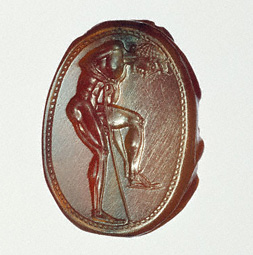



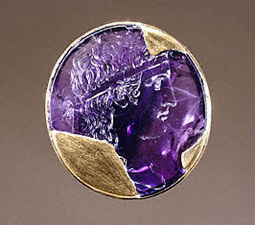

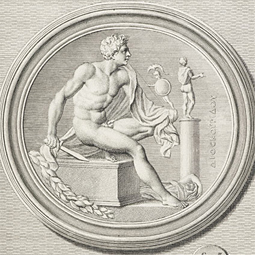
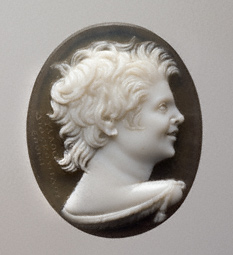
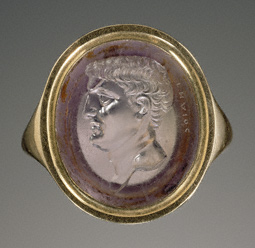
No comments:
Post a Comment